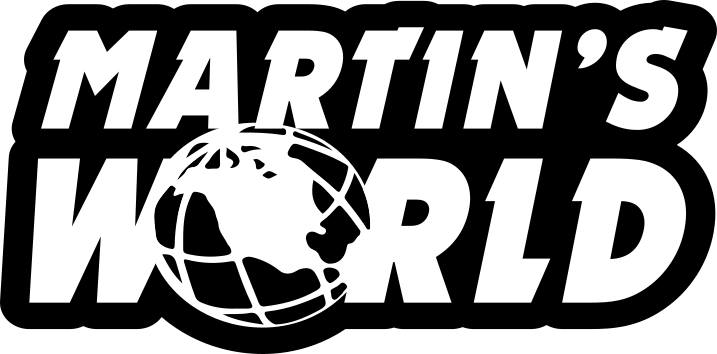Echoes of the Past: How Ending Drug Prohibition Could Curb Gang Feuds in Ireland
The recent shooting in Finglas, Dublin is a tragic reminder of the violence and chaos that can be associated with drug prohibition. Comparing this situation to another drug that was once prohibited and had massive amounts of violence associated with its illegal trade offers valuable insights into how legal policies can impact organized crime. This other drug I speak of is Alcohol.
An image taken during the era of alcohol prohibition showing that “Booze Hounds” wernt’t welcome
During the Alcohol Prohibition era in the U.S., the term "organized crime" came into prominence, a significant shift from the previous landscape dominated by small-time criminal activities and corrupt political bosses. The overnight ban on alcohol through the 18th Amendment in 1919 effectively shut down legitimate bars and breweries, creating a vacuum that was quickly filled by mobsters. This led to a dramatic shift in underworld power dynamics, with criminal gangs evolving from local nuisances into sophisticated operations dealing in the illegal trade of alcohol on an interstate and even international scale.
An alcohol propaganda poster from the alcohol prohibition era
The need to source and distribute alcohol across state and international borders led to unprecedented levels of cooperation among various criminal groups, marking the birth of what we now recognize as syndicated crime. Figures like Charles "Lucky" Luciano in New York and Johnny Torrio in Chicago became prominent during this time, orchestrating extensive bootlegging operations and forging mutual protection pacts across diverse ethnic lines.
The financial implications were immense. Mob kingpins like Al Capone were reportedly earning as much as $100 million a year during Prohibition, and a significant portion of this income was spent on bribes to police, politicians, and federal investigators. The end of Alcohol Prohibition in 1933 did not spell the end for organized crime; instead, these groups shifted their focus to other prohibited activities such as other drugs, gambling, and prostitution. What did come to an end however was the violence associated with the trade of alcohol and I believe if we end the prohibition of “drugs” like cannabis, coca and opium we could bring an end to the violence associated with their trade. This is because the violence associated with the trade is due largely to the prohibition of the substances and the evidence supporting this is we don’t have shoot ups between Heineken , Budweiser or even any small/micro breweries.
Drawing a parallel to the current situation in Ireland, the Kinahan Organised Crime Group (KOCG), also known as the Kinahan Cartel, mirrors the dynamics of American mobsters during Prohibition in several ways. Founded by Christy Kinahan in the 1990s, the Kinahan group evolved from a local Dublin street gang into a transnational organized crime syndicate, alleged to be among the most powerful in the world, with significant operations in Ireland, the UK, Spain, and the UAE. Their criminal activities include drug and firearms trafficking, and they are believed to have amassed wealth up to €1 billion.
A side by side of wanted posters for the infamous mob boss “Al Capone” and the founder of the Kinahan cartel “Chritsy Kinahan”
Like the American mobsters who expanded and solidified their operations during Prohibition, the Kinahans have shown a remarkable capacity for international coordination and sophisticated criminal enterprise. The group's involvement in the international drug trade, led by Christy's son Daniel Kinahan, indicates a similar evolution from local to global scale criminal operations. Their ongoing feud with the Hutch Gang, resulting in multiple deaths, echoes the violent turf wars of Prohibition-era gangs in the U.S., underlining the lethal consequences of such criminal rivalries.
The U.S. Department of State's offer of rewards for information leading to the arrest and/or conviction of Kinahan family members underlines the seriousness of their criminal activities, paralleling the American government's efforts during the 1920s and 1930s to dismantle organized crime networks. This comparison highlights the persistent challenge posed by large-scale organized crime, which thrives under prohibition regimes, whether it's alcohol in the early 20th century United States or drugs in contemporary Ireland.
The recent gangland shooting in Finglas, Dublin, and the Regency Hotel shooting are similarly rooted in the illegal drug trade. The Finglas shooting, where a 23-year-old man linked to a local family-based drugs gang was killed, highlights the ongoing violence within these criminal networks. The Regency Hotel shooting, connected to a feud within the Irish drug trade, further underscores the link between prohibition of substances and the rise of violent criminal activities.
The comparison suggests that, much like the end of alcohol prohibition reduced the power and influence of organized crime in the U.S., a change in drug policy could potentially have a similar impact on drug-related gang violence in Ireland. The lessons from the Alcohol Prohibition era indicate that outlawing substances can lead to the creation of powerful, violent criminal enterprises. By contrast, legal regulation might reduce the incentives for such criminal activities, leading to a decrease in related violence and crime.
An anti-prohibition parade and demonstration in Newark, New Jersey, October 1932
Taking all this into account, advocates for reducing this violence on the streets of Ireland that’s associated with the trade of illegal drugs, if they are genuine and serious then they need to join the call for an immediate reassessment of Ireland’s drug policies.
If you agree with the sentiment of this article then you can follow this LINK to email your TD now to push for changes to Irelands drug policies. This service was created by Crainn in partnershiup with Uplift to make it easier for people to contact their local TD’s in relation to changing policy around Cannabis. Following the link provides you with a template which refers to the recent recommendations made by Ireland’s Justice committee but you can edit this however you like.




